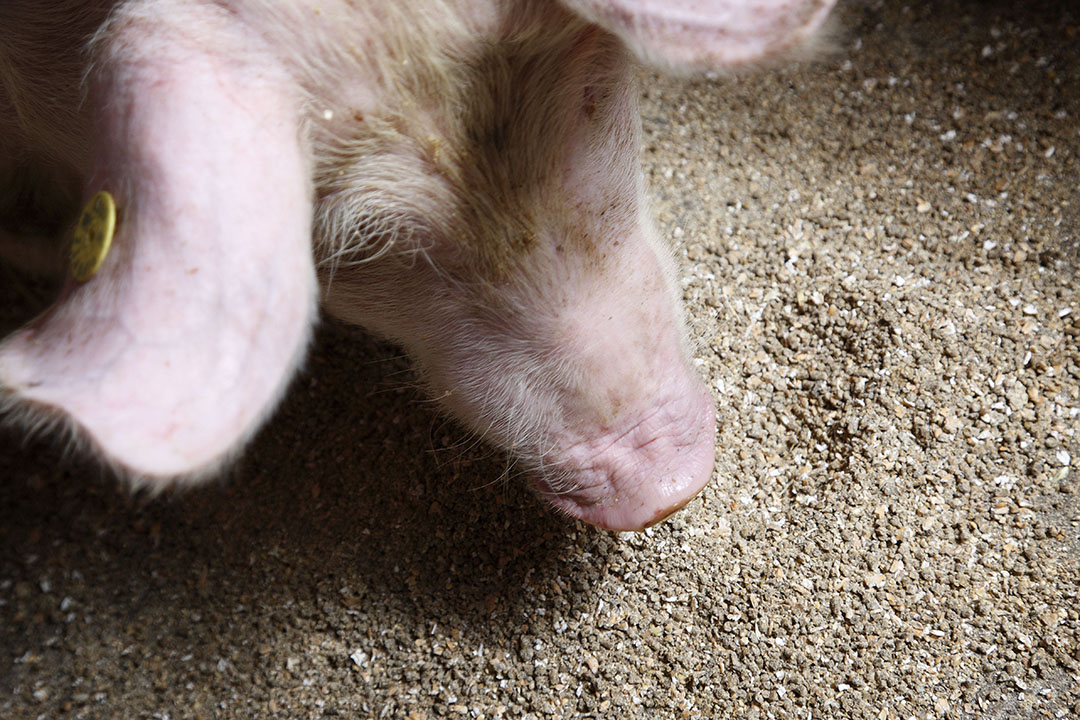Feed additives: Mitigating the effect of pig viruses in feed

There is exciting news from the United States on products that mitigate the transmission of 3 serious viral pig diseases through feed.
Results from a new collaborative study were recently published in the journal ‘Transboundary and Emerging Diseases,’ where 15 different commercial additives were tested to evaluate their effect on mitigating Senecavirus A (SVA), Porcine Epidemic Diarrhoea virus (PEDv) and Porcine Reproductive and Respiratory Syndrome virus (PRRSv) in contaminated feed.
A diverse set of organic chemistries were tested across the additives, from essential oils and monovalent or multivalent organic acids to short, medium, and long chain fatty acid blends and formaldehyde-based products.
Results are promising for pig performance
“In 14 of the 15 additives tested, pigs on the supplemented diets had significantly greater average daily gain, significantly lower clinical signs and infection levels, as well as numerically-lower mortality rates compared to the control pigs,” says Dr Scott Dee, director of applies research at Pipestone Veterinary Services in Pipestone, Minnesota. Dr Dee conducted the study with several colleagues at Pipestone, Dr Megan C. Niederwerder at Kansas State University and Dr Aaron Singrey and Dr Eric Nelson at South Dakota State University (Dee is also an adjunct faculty member there).
 Mitigating virus in pig feed
Mitigating virus in pig feed
It was in 2014 that the North American veterinary community – as well as the worldwide feed and pork industries – started to realise that viruses were being transmitted in feed.
Options for feed biosecurity
“We concluded that these additives mitigated the effects of these 3 viruses in contaminated feed, resulting in improved health and performance as compared to pigs fed non-mitigated diets,” says Dr Dee. “It’s exciting that producers and veterinarians now have options for use in a feed biosecurity programme. However, it is important to note that the products tested in this study do not yet have label approval claiming efficacy against viruses. Multiple companies are collaborating with the FDA to move this forward.”
African Swine Fever virus
The effects of several of these feed additives against African Swine Fever virus (ASFv) are currently being carried out by Niederwerder at her lab facility, which is certified to handle this virus.
 Track the movement of African Swine Fever
Track the movement of African Swine Fever
For everything you need to know about ASF, from the latest outbreaks to controls stay up to-date…
Building on past research on contaminated feed
This study builds on findings (from the same group of researchers and others) that have demonstrated these same pig viruses can survive in feed. The capability of livestock feed to transmit viral diseases was first proven scientifically by Pipestone in 2014 during the PEDv epidemic in North America. “Since that time, various feed additives have been evaluated in lab settings for their effect on viral viability and infectivity in contaminated feed using bioassay piglet models,” Dr Dee explains. “However, studies that involve the real-world conditions of commercial swine production were needed, with larger populations of pigs, realistic volumes of contaminated feed supplemented with selected additives and natural feeding behaviours.”

‘Ice block’ challenge
Dee and his colleagues used a new research model called an ‘ice-block’ challenge to insert equal concentrations of PRRSv, SVA and PEDv into feed treated or non-treated with additives. The ice blocks were then manually dropped into designated feed bins and the pigs were allowed to consume the feed with natural feeding behaviour.
A listing of the additives, participating companies, concentrations and specific trial results is included in the published paper.

Canadian feed biosecurity programme
PED broke out in the US in 2013 and its movement into Canada in 2014 was traced to a contaminated feed ingredient. In the years following, members of the Canadian Pork Council worked with staff at the Canadian Food Inspection Agency (CFIA) to create national guidelines for the import and handling of feed ingredients that presented high risks for viral diseases such as ASF, along with storage time and heat treatment recommendations for industry. Much of this was launched in spring 2019.
Working towards a US feed biosecurity programme
Regarding what’s been happening in this vein within the US, Dr Dee says the pork and feed industries there have worked very hard over the last few years and have been successful with making changes to biosecurity at feed mills. “There are strong industry programmes now in place, but I and others would like to see a national government-led pig virus disease prevention and control programme pertaining to feed, similar to what is in Canada,” Dr Dee says. “We need a national government-driven programme with additives approved by the Food and Drug Administration (FDA) and standard operating procedures for storage time, handling and so on.”
Dr Dee adds, “we have had good leadership from industry and we scientists are building a body of evidence on which a sound national programme can be based. A national Feed Risk Taskforce has been formed, and I sit on it with staff from the US Department of Agriculture, FDA, Swine Health Information Council, National Pork Producers Council, CFIA, members of the poultry, swine, cattle and feed industries, and others, and we are meeting this month (September 2020). We will hopefully be able to set short, intermediate and long-term goals to get a programme going and discuss future research directions.”
Making decisions on feed mill specifications
Dr Dee ads that in the meantime, now that he and his colleagues have provided the industry with efficacy data, it’s up to individual feed companies and producers to make mitigation decisions based on cost, mill specifications and so on. “We’ve discovered there are lots of additive options for viruses of domestic interest, such as PRRSV, PEDV and SVA,” he says, “and we look forward to data from Dr Niederwerder’s lab regarding the effect of these products against foreign animal diseases.”











